- Industry insights
- People in tech
- Product development
- Tech trends at BEECODED
- 11 Jul 2025
HR Workflow Automation: Cut Onboarding Time by 60% While Ensuring Compliance
Let’s take a look at what HR automation is, what challenges arise, and how we can overcome the hurdles of HR automation compliance.
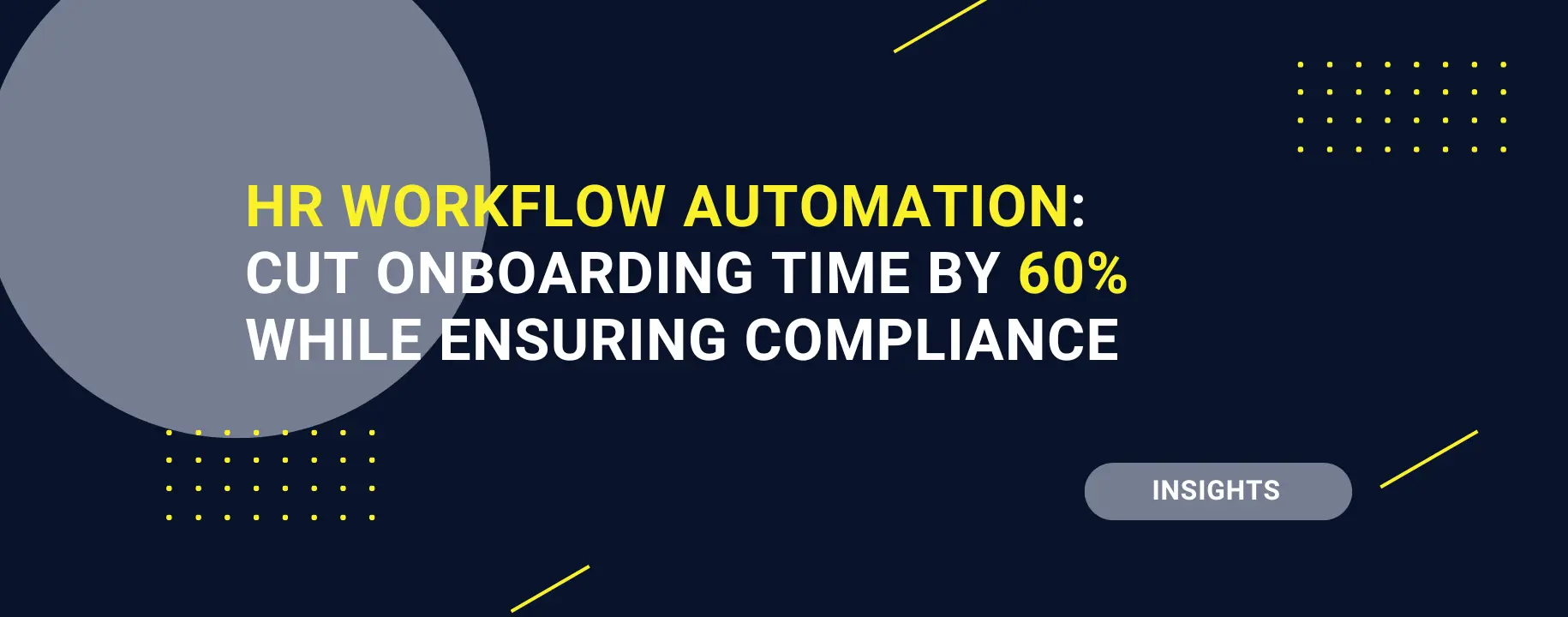
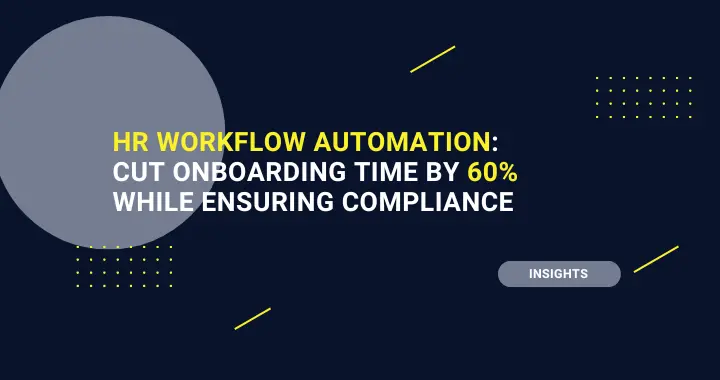
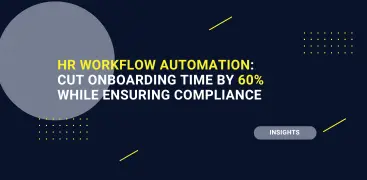
Table of contents
Contributors

Has the year 2025 caught up with you, and you still don’t have an HR workflow automation process in place? Read on to see what you’re missing out on.
Welcoming newbies to your company is not an easy task, but when onboarding is done well, it greatly improves employee retention, productivity, and employer reputation. With employee onboarding automation, organizations typically reduce HR administrative time by 60% and onboarding costs by approximately $2,475 per employee (according to akool.com).
What’s more, Forbes reports that 87% of organizations that use onboarding automation increase their onboarding speed for new hires. These are some numbers really not worth ignoring, right?
Let’s take a look at what HR automation is, what challenges arise, and how we can overcome the hurdles of HR automation compliance.
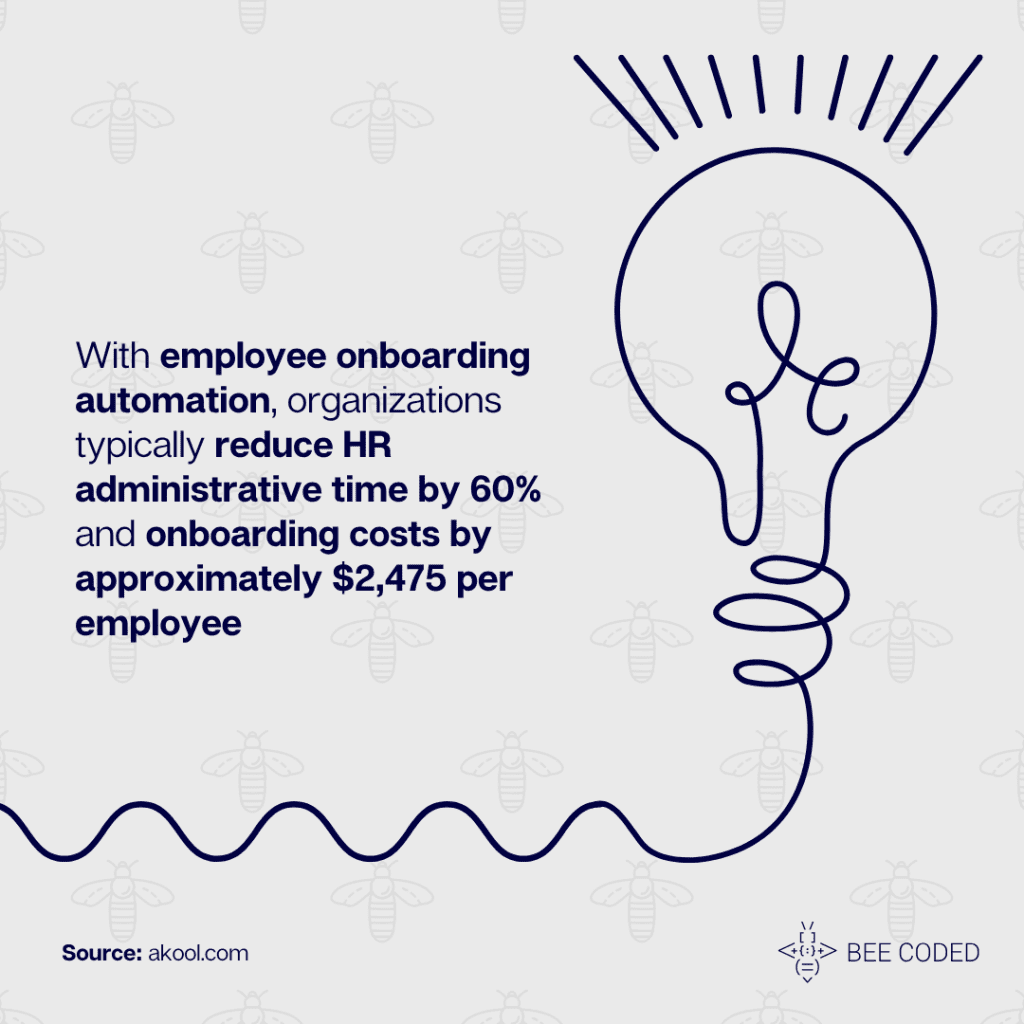
What is HR Workflow Automation?
HR workflow automation means using technology to automate repetitive tasks and administrative processes in the HR department. This process:
- Increases the efficiency and productivity of your HR team.
- Reduces human errors.
- Decreases processing time for administrative tasks.
- Improves the employee experience through clearer and faster processes.
- Ensures easier compliance through automated checks.
Today, we’ll focus our attention on the automated onboarding process—that is, the automated onboarding of new employees.
What HR Processes Can Be Automated?
Processes that can be automated include:
- Payroll
- Onboarding & Offboarding
- Background checks
- Compliance management.
Why compliance matters: the right technology allows you to automate necessary compliance tasks, reducing the risk of violations and costly penalties.
The Compliance Barriers in Onboarding HR Automation
When we hear terms like “compliance” or “privacy,” we already know we’re on sensitive ground, so we need to navigate carefully.
Onboarding compliance means making sure all new hires comply with legal, regulatory, and internal requirements:
- Completing mandatory forms.
- Verifying employment eligibility.
- Complying with industry regulations (e.g., HIPAA in healthcare).
According to the 2024 State of the Employee Onboarding Report (enboarder.com), 59% of respondents said paperwork and compliance were a significant part of their onboarding experience.
Who is responsible for onboarding compliance?
- HR Department: Oversees the process and checks the paperwork.
- Legal and Compliance Teams: Ensure processes comply with labor laws, privacy regulations, and industry requirements.
- Hiring Managers: Enforce company policies and verify mandatory training.
- IT & Security Teams: Implement security protocols and control access to data.
- Payroll & Finance Teams: Verify tax documents and payroll data.
Types of onboarding compliance
- Legal compliance — compliance with labor laws.
- Employment eligibility — checking the legal right to work.
- Industry-specific compliance — e.g., HIPAA in healthcare.
- Data privacy compliance — GDPR workflow automation.
- Workplace safety — safety training.
- Company policy compliance — NDAs and confidentiality agreements.
Limits in HR Automation
We will look at things from two perspectives: the legal and the employee perspective.
I) The legal perspective — GDPR
GDPR is an acronym you hear a lot these days, and not necessarily only in the HR department. Challenges:
- You need to get clear consent for the data you collect.
- Employees have a “right to be forgotten,” a right you need to provide.
Solutions:
- Automated forms that ask for consent.
- Systems that delete data on demand.
Find out more about GDPR compliance in our article here.
II) Employee perspective
People ask, “Why are you asking me for this data?” Good employee onboarding automation systems answer automatically:
- Explain what data you’re collecting and why.
- Provide dedicated chatbot: “Where does my data go?”
- Ensure restricted access to data & strong encryption.
Automating Onboarding: A Compliance-First Onboarding Workflow
Let’s take a look at the differences between manual onboarding and automated onboarding.
Manual onboarding vs. automated onboarding
| Aspect | Manual Onboarding | Automated Onboarding |
| Time | 3-4 weeks | 3-5 days |
| Task Tracking | Emails, spreadsheets | Automated workflows and reminders |
| Errors | High risk of errors | Data checked automatically |
| Meetings & Check-ins | One-to-one meetings and manual follow-ups | Uses bots, knowledge bases and workflow automation |
| Compliance | Manual paperwork, prone to delays | Digital forms, e-signatures, secure audit trails |
| Data Privacy | Paper/email risks | Built-in GDPR compliance and encryption |
Step-by-Step Onboarding Automation
- Pre-boarding: send welcome emails and clear guidelines before the first day. Include videos about company culture to make the new hire feel prepared and welcome.
- Paperwork & Compliance: automate digital signing of contracts and tax forms. Provide an audit trail to prove everything is completed correctly and on time.
- IT Provisioning: automatically set up email accounts, software access and prepare the necessary hardware so the employee can start productively from day one.
- Training & Development: provide access to relevant online courses and track progress. Send automatic notifications for mandatory training.
- Introductions & Integration: schedule team meetings & provide access to directories and communication platforms for rapid onboarding.
- Feedback & Check-ins: send automated surveys for feedback and set reminders for regular check-in meetings with managers.
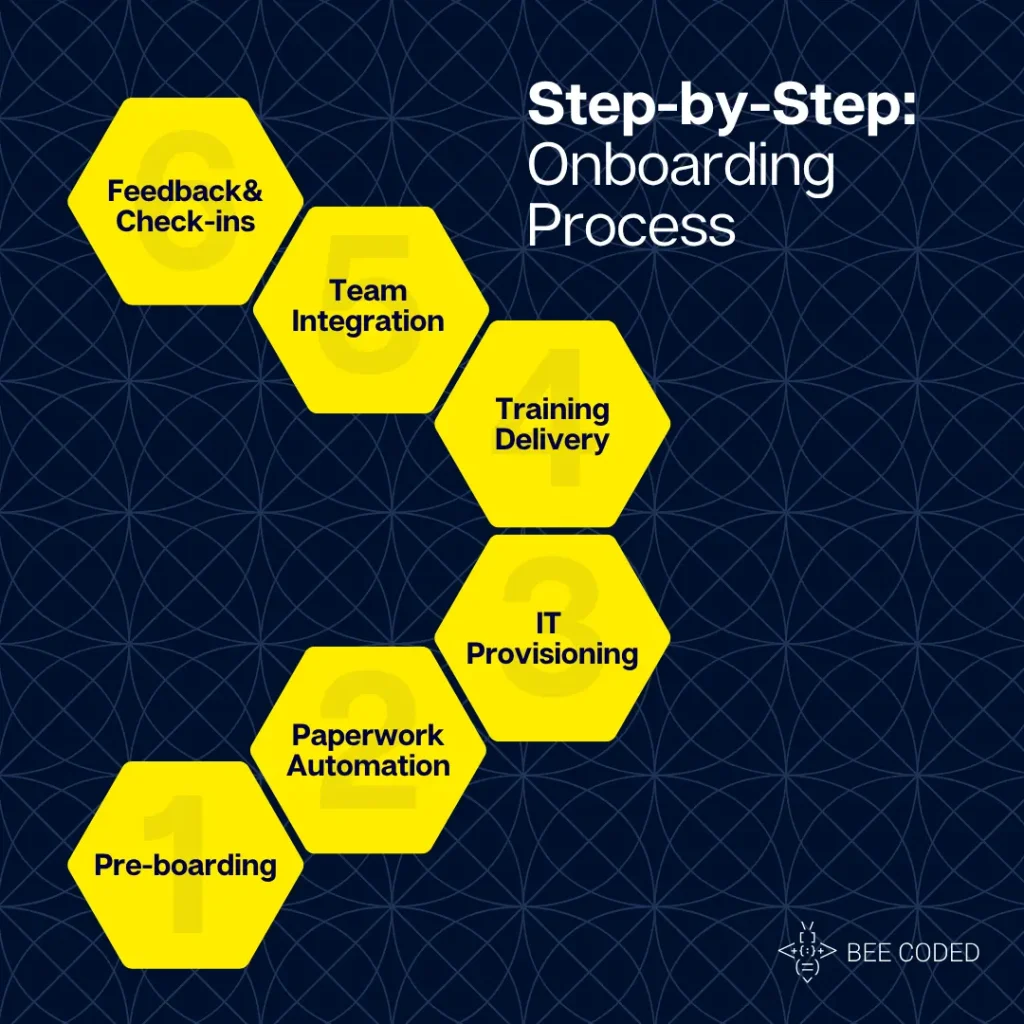
New Hire Experience with HR automation
Let s imagine Gabriel, a new employee.
Without automation: He comes to the office and doesn’t know what to expect. Lots of documents, delays with the laptop, lack of clarity.
With an automated onboarding process:
- He received a welcome email before his first day.
- He completed the documents online, signed digitally.
- The laptop is ready and set up on his desk.
- The chatbot answers his questions, like “Where can I see my payslip?” within seconds.
The result? He feels prepared, included and excited.
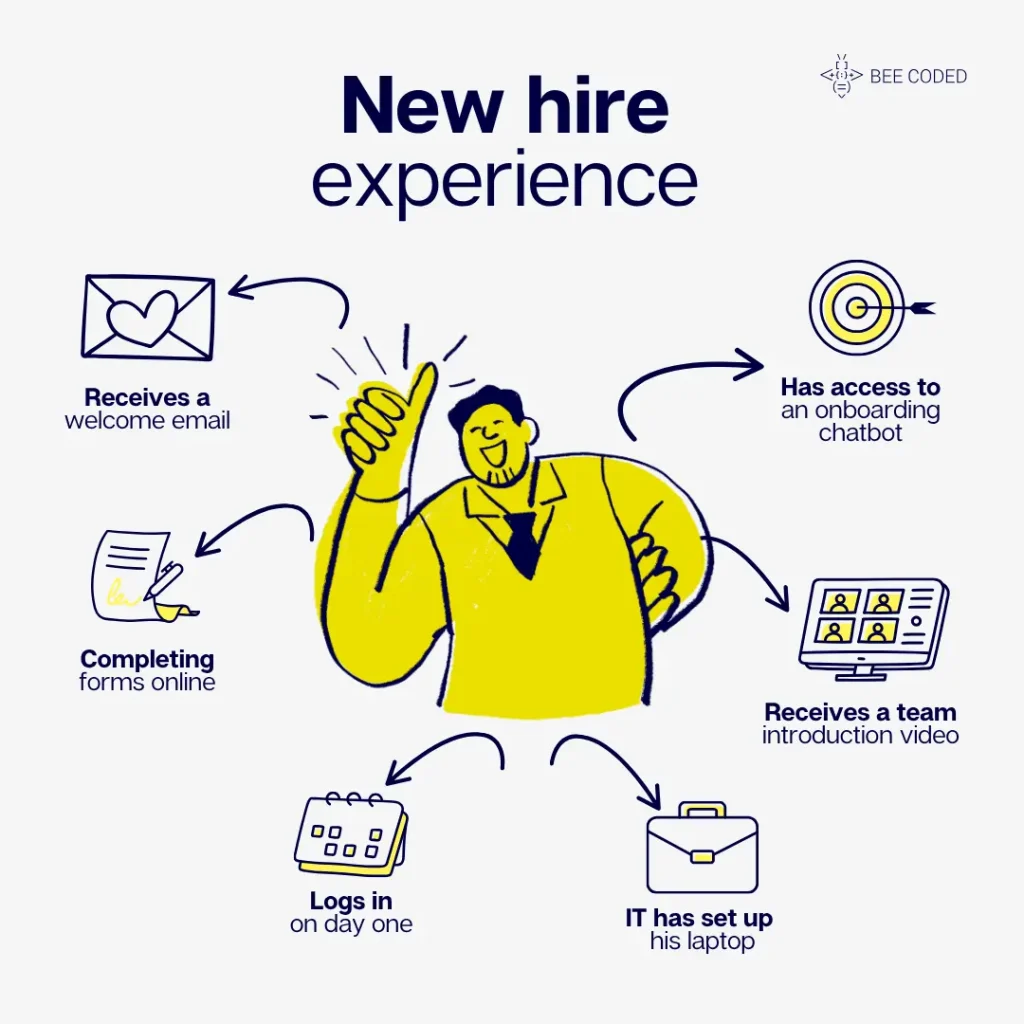
Choosing the Right HR Automation Tool
Yes, an HR workflow automation tool makes your life easier. You can:
- Automate repetitive workflows.
- Verify HR automation compliance.
- Integrate with GDPR legislation.
- Ensure automated audits and full traceability.
How does Dynamics 365 HR ensure GDPR compliance?
- Digital consent: forms automatically signed and saved.
- Right to be forgotten: data deleted on request.
- Limited access: only the right people see information.
- Audit trail: everything is traceable.
- Encryption and security: data protected end-to-end.
- Retention policies: data is automatically deleted or archived after the legal deadline.
Hi, we’re BEE CODED. Are you looking for HR automation and privacy solutions? We can help! We’ll guide you in choosing the right technology and building a compliance-first process, so your onboarding becomes a driver of organizational culture, not just a bureaucratic checklist.
Contact us and let’s talk about your project!
How to Reduce Financial Close Time by 3 Days with ERP Workflow Automation
Outsourcing vs. In-house Development: Why Romania is the Best Middle Ground
The Talent Pool in Romania: Why Global Companies Hire Developers Here